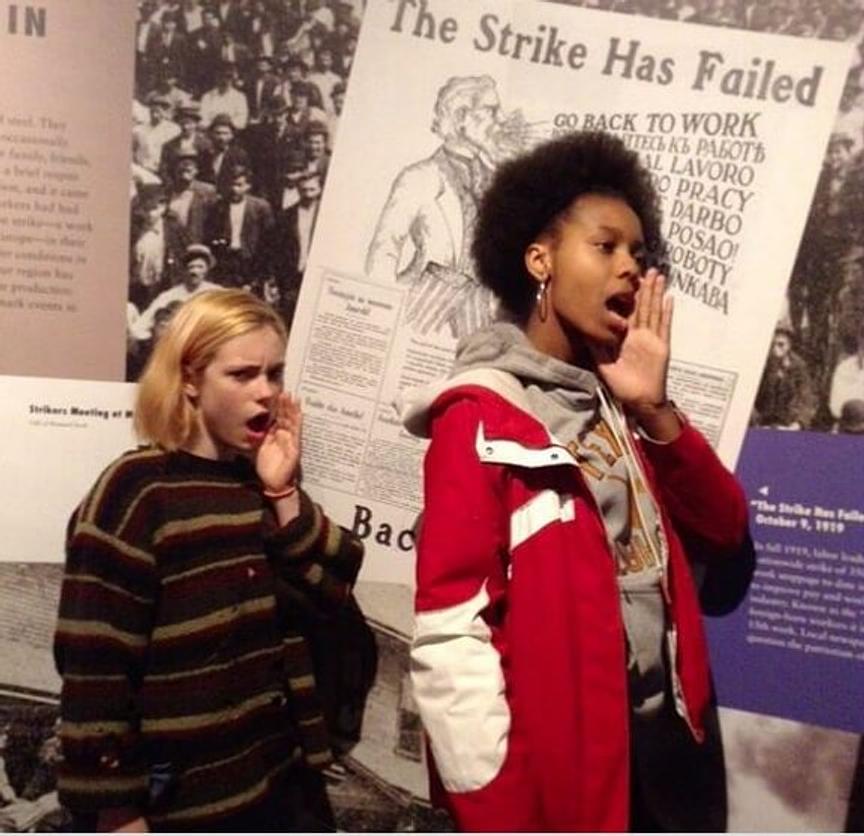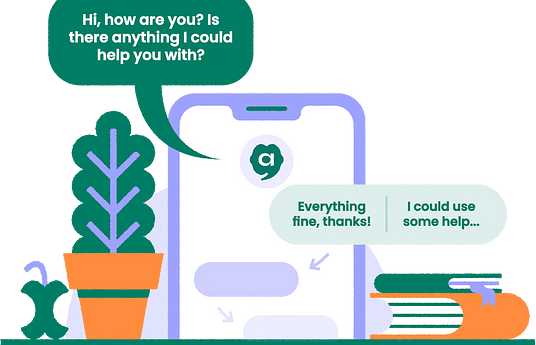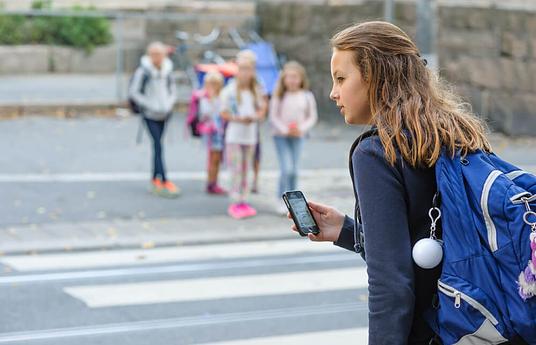At the Senator John Heinz History Center in Pittsburgh, PA, we prioritize a people-centric experience that makes the past relevant to audiences today, demonstrated in our “Be the Change” 9th Grade Civics program. Through a longstanding partnership with Pittsburgh Public Schools, the History Center hosts all 9th grade students as part of their civics curriculum. The program serves 1,800 students in an experience designed to encourage them to reflect on change agents from the past, hone their civics skills today, and become empowered as young change makers for the future. Unlike traditional civics curriculum that prioritizes knowledge about processes or procedures, the Be the Change program amplifies the stories of individuals who sought out and succeeded in making civic change happen. This framework for using historic models as contemporary inspiration to build the next generation of change makers and engaged citizens can be applied in multiple learning contexts.
A Mindset for Civics
As educators, we recognize that audiences are drawn to personal stories and we have extended that approach to include a range of creative activities that focus on ideas, issues and conditions, and personal agency. When we started focusing on personal narratives to teach civics, we recognized that our 9th grade audience often found people and actions from the past to be too abstract. We searched for a way to help students understand people stories in a new way, a way that enriched narrative and prioritized the way people may have felt, worked, and ultimately made an impact in our community. This search culminated in the concept of a “mindset” for change makers, the common personality attributes that span time, civic issues, and personal experience that students could also connect with and identify as being relevant in their own lives. This new approach allowed people, both the historic change agents and the modern student audience, to become central to the civics teaching.
A mindset is defined as a person’s way of thinking; a collection of thoughts and beliefs that shape thoughts and ways of working or behaving. Psychologist Carol Dweck poses the question: “what are the consequences of thinking that your intelligence or personality is something you can develop, as opposed to something that is a fixed, deep-seated trait?” We want students to be able to identify the mindset of change agents in the past and recognize that they share some of these characteristics, and that they can shape their mindsets to develop more characteristics in the future. The mindset framework was also designed to support feelings of empowerment in the students, which is key as we shift the narrative from the historic stories of change to contemporary and future actions that students may take in their communities. The development of the mindset characteristics is explored further in the Steps Section.
Mindset Impact
The creation of the mindset approach was driven by student evaluation data, which revealed that students consistently showed strong and often negative reactions to the From Slavery to Freedom exhibition, which traces the story and legacy of slavery from West African culture to the Trans-Atlantic slave trade, abolition, the Underground Railroad, the Civil War, and ultimately the struggle for civil rights. Given that the students who participate in this program are predominantly African American, it was no surprise that they found the exhibition space challenging and felt angry and sad after visiting it. We aimed to develop an experience that would help students relate to the personal stories that they encounter in the exhibit and make explicit ties to the change agent mindset, hoping to replace anger with agency.
A new workshop, Journey to Freedom, was created where students embark on journey through the exhibition using a range of activity prompts to help them examine the people, objects, and mindset characteristics they encounter. At the conclusion of their time, we ask students to record one word that represents the journey to freedom to them, which are then placed on a puzzle piece. We regard the words written by students on the back of the puzzle piece as an opportunity for us to understand the impact of the program and were hopeful that these responses would indicate if the introduction of the change agent mindset had influenced their gallery experience. The puzzle responses, once grouped and coded, provided evidence that the Journey activity was far more likely to produce positive responses than previous iterations of the program. Almost half of the students made an explicit connection to one of the change agent mindset characteristics. This was an important finding for us, as it supported our initial concept about the impact of the change agent mindset and indicated that students identified personal characteristics with the historical stories they encountered. The 289 responses were coded using the categories below, and had the following results:
• Positive Character Trait (examples: determined, brave, strong) – 43%
• Action Oriented (examples: fight, change, rights) – 20%
• Positive Affect (examples: pride, inspiring, empowering) – 13%
• Adverse Affect (examples: scary, angry, sad) – 24%
This data is further supported by survey responses, as students who indicated that the Journey to Freedom was the activity they enjoyed the most, also provided comments such as, “I enjoy learning more about slavery even if its sad because I’m African American and want to more about my ancestor’s lives,” and “I enjoyed seeing the evolution of slaves and black people changing themselves drastically to a new level of respect, careers, and their families.” This shift in student response was dramatic and encouraging for our work, particularly with the implementation of the mindset characteristics as a framing device for learning experiences.
Activating Civics through Empathy and Mindset
The change agent mindset is layered throughout the multiple activities within the Be the Change program, all of which are centered on making empathetic connections with the change agents of the past. The activities that students do throughout the course of the program also include student response elements, ensuring that youth voice is prioritized alongside the lessons of history. The activities could be replicated in a classroom setting using digital collections and primary sources.
• Change Agents in History – this session connects the stories of change agents with the steps of service learning, asking students to recognize the steps in the stories featured in our regional history exhibition. There is a special focus on identifying causes in our community that people acted on in the past and how they might parallel with causes people care about today. Students respond to questions about the personal stories and causes through Instagram stories.
• Objects of Civic Change – this session is designed for students to recognize how objects can represent civic change and reflect elements of the change agent mindset. Students uncover the stories of civic and social change, learning how objects from the past have relevance today and to understand how the people who made or used them in the past worked for change. This gallery work inspires each student’s contribution to a large collaborative artwork in one of the museum’s public spaces.
• Journey to Freedom – this workshop takes place in the From Slavery to Freedom exhibition, where students embark on largely self-guided journey through the exhibition using bags with activity prompts to help them examine the people, objects, and mindset characteristics they encounter. Students enjoy the element of discovery as they complete the activities, which are part scavenger hunt, such as finding the object in the gallery that was pictured on a clue card, and part mindset interpretation. As the students explore their section of the gallery, they work to connect their group’s thematic word, either adversity, determination, or freedom, to the exhibit’s content. Similar words or phrases could be used in other learning settings as prompts to clearly focus interpretation of sources. At the end of the experience students gather to discuss what they have seen, and each small group is given a puzzle piece (constructed of mirrored acrylic) and asked to discuss and record one word that represents the journey to freedom to them. With these words placed on the back of the puzzle pieces, the students assemble the puzzle to reveal a powerful quote (featured in one of the posts below).
A Framework to Shape Teaching
Our Be the Change program is thoroughly evaluated each year with both teachers and students. This evaluation informs our yearly re-shaping of the program to better meet the needs of our learners. The framework that we have found to have the most noticeable impact on students, based on their own work and evaluation, has been the integration of a mindset that makes explicit ways of thinking and making change. This approach has become an integral way to teach, making historic people and events more relevant and allowing students to see themselves in these stories. We believe our teaching can become truly transformational when students are inspired to recognize, celebrate, and adapt their own civic mindsets because of their time with these powerful stories of change from the past.



